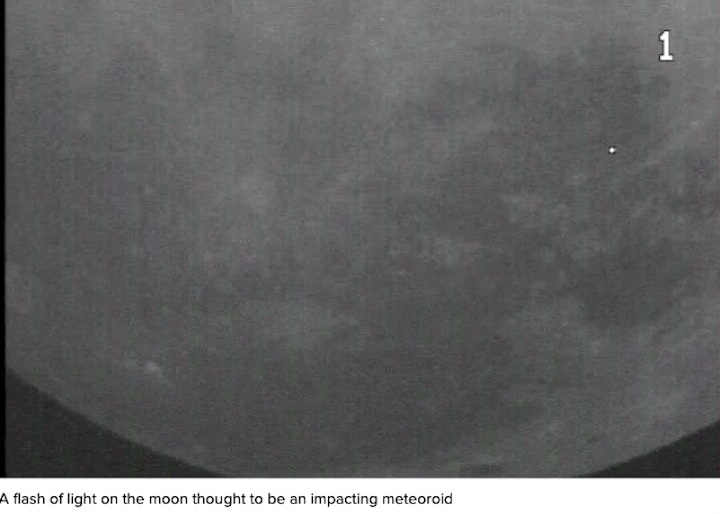5.06.2019

For centuries people have noticed odd flashes and other inexplicable lights on the surface of the moon. Possible explanations range from meteors to moonquakes to UFOs, but they have yet to be proven. A new telescope in Spain could provide more data and perhaps an answer to the mystery.
So-called "lunar transient phenomena" can refer to flashes of light on the moon that are either fleeting or longer-lasting. Some areas of the lunar surface have also been seen to darken randomly.
Since at least as far back as 1787, people have documented these enigmatic lights. On April 19 of that year, astronomer William Herschel reported seeing three reddish glowing areas on the moon that he interpreted to be erupting lunar volcanoes. Apollo astronauts, including Apollo 11's Michael Collins, also reported seeing unusually bright areas while orbiting our natural satellite.
"There is an area that is considerably more illuminated than the surrounding area," Collins told NASA mission control the day before the moon landing in 1969. "It just has — seems to have a slight amount of fluorescence to it. A crater can be seen, and the area around the crater is quite bright."
The new lunar telescope, north of Seville, Spain, includes two cameras that watch the moon every night for the odd flashes. A team led by Hakan Kayal, professor of space technology at Julius-Maximilians-Universität Würzburg in Germany, will then analyze photo and video sequences of the event.
When the telescope and the team observe the lunar phenomenon, they'll compare their results to data from the European Space Agency, which also keeps a constant eye on the moon.
"If the same thing was seen there, the event can be considered confirmed," Kayal explained in a release Friday.
He adds that figuring out the source of the strange flashes makes sense now, given the resurgent interest in establishing a presence on the moon from government space agencies like NASA and private companies like SpaceX and Jeff Bezos' Blue Origin.
Anyone who wants to build a lunar base at some point must of course be familiar with the local conditions."
While the telescope is already in operation, more work remains to tweak the artificial intelligence and other software that'll help the system discern actual lunar transient phenomena from more mundane events like birds or airplanes flying in front of the cameras in Earth's atmosphere.
Kayal hopes to have the whole system dialed in and working on solving the mystery in about a year.
Quelle: cnet
